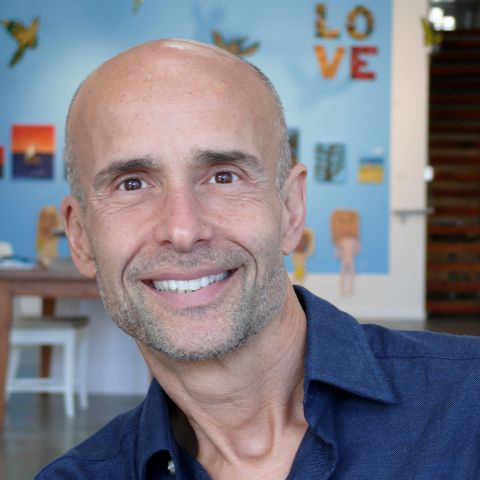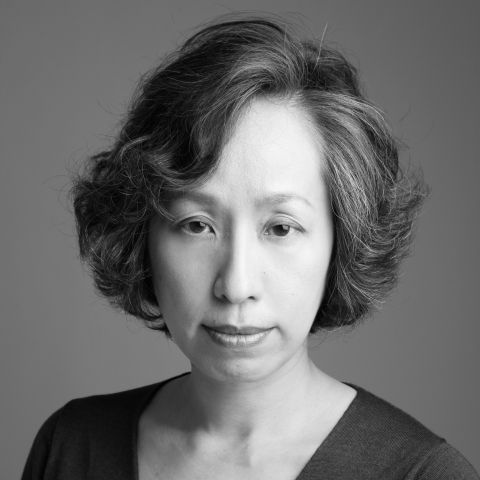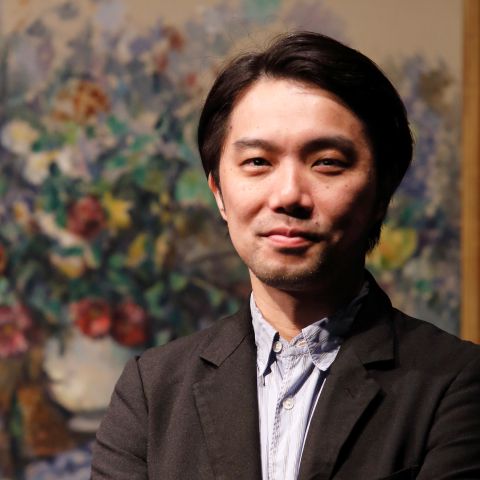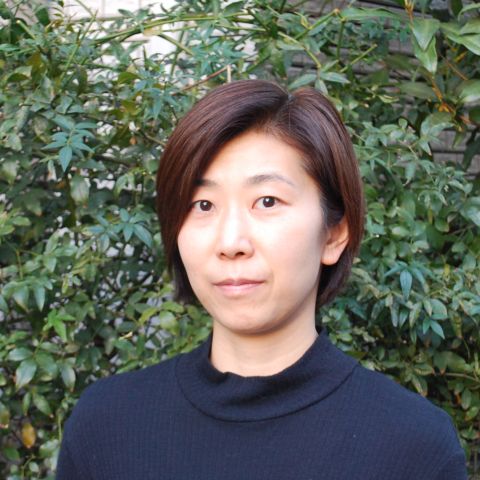2. International Symposium
- Date:
- November 30(Sat), 2024
- Venue:
- Lecture Room 1, Building C, Kyoto City University of Arts (Kyoto)
This program has finished.

General Information
Introduction
The world is moving toward an inclusive and sustainable society in a variety of areas. In the field of welfare and art in Japan, a law concerning the Promotion of Cultural and Artistic Activities by Persons with Disabilities went into effect in June 2018, establishing goals such as offering opportunities to exhibit work, improving appraisal systems, and deploying human resource training.
In addition, the recent global drive to include the work of artists with disabilities within the sphere of contemporary art continues to gain momentum. Examples include the 55th Venice Biennale in 2013, which drew a huge response exhibiting work created by experts in fields differing from art (Jung, Steiner, Hilma af Klint), and works by artists with disabilities, such as Shinichi Sawada, alongside contemporary artists. Since then, the Museum of Modern Art in New York, the Centre national d'art et de culture Georges-Pompidou in Paris, and other leading museums around the world have started appraising and acquiring work that had previously been labeled ‘art brut’ and ‘outsider art’. In a more recent development, the San Francisco Museum of Modern Art purchased 114 pieces from the Creative Growth Art Center, a 50-year-old facility for people with disabilities in California, and exhibited them in a commemorative exhibition, Creative Growth: The House That Art Built, in April 2024. In Japan, the Shiga Museum of Art remains the only public art museum with an art-brut collection policy, and continues to enhance its collection through purchases and donations.
Though the inclusive drive to introduce, appraise, value, and collect the work of people with disabilities as contemporary art may not yet have flourished in Japan, it has clearly become a global force. In this symposium, we will hear from Tom di Maria of the Creative Growth Art Center, as well as other professionals who work with artists whose voices and expressions have been marginalized, and who are at the forefront of this global movement. Furthermore, this symposium aims to provide an opportunity to consider the challenges and difficulties faced not only by artists with disabilities but also by women, BIPOC, and others who do not follow the mainstream of the art world—both as issues within it and as broader societal concerns.
| Date | November 30(Sat) , 2024
Part 1: 13:00−14:30 |
|---|---|
| Venue | Lecture Room 1, Building C, Kyoto City University of Arts |
| Capacity | 100 |
| Admission | Free / Registration required |
- Simultaneous Japanese-English interpretation available
- A video recording will be distributed at a later date
- Organizers: Osaka Prefecture, Association for the Promotion of Contemporary Art in Japan, Capacious
- Planning Advisor: Yukiko Koide Presents
- Coordinator: Tazaki Nao
- Research Collaboration: Tanizawa Sawako, Associate Professor, Faculty of Fine Arts, Kyoto City University of Arts
Program & Speakers
Part 1: 13:00−14:30
The 50-Year Journey of Creative Growth: From The Body Shop to the San Francisco Museum of Modern Art
The Creative Growth Art Center in Oakland, California is an art center that was founded for the benefit of individuals with disabilities. The talk will focus on the 50-year history of the center since its founding in 1974, highlighting key moments, including historical reviews, social movements, and other events that marked turning points in its development. Tom di Maria of Creative Growth and his long-time friend Yukiko Koide will discuss the relationship between outsider art and contemporary art in the US, as well as the position of outsider art within the latter. They will also explore the broader context of art and disability.
| Speaker |
|
|---|---|
| Interviewer |
|
Part 2: 14:45−16:15
Appreciating the art of those with disabilities as contemporary
We will invite professionals who actively engage in the research, criticism, and curation of works by artists who do not follow the mainstream and also explore their motivations and the significance of their activities. Additionally, this event will provide an opportunity to reflect on the joy, challenges, and possibilities of engaging with marginalized art, such as works by those with disabilities, and to consider what artistic expression means for humanity.
| Speakers |
|
|---|---|
| Moderator |
|
Profile

Tom di Maria
Director Emeritus, Creative Growth Art Center
Tom di Maria has served as Creative Growth Art Center’s Director since 1999. As Director, he has developed partnerships with museums, galleries and international design companies to help bring Creative Growth's artists with disabilities fully into the contemporary art world. He speaks around the world about the Center’s major artists and their relationship to both Outsider Art and contemporary culture. Prior to this position, he served as Assistant Director of the Berkeley Art Museum/Pacific Film Archive, at UC Berkeley. He holds a B.F.A. from Rochester Institute of Technology and a M.F.A. from Maryland Institute, College of Art. In 2019, he was awarded the Visionary Award by the American Folk Art Museum in New York.

Koide Yukiko
Curator / Founder, Yukiko Koide Presents
In 1990, she began her career as an independent curator in Chicago, organizing pioneering exhibitions in Art Brut and Outsider Art. In 2000, she established Yukiko Koide Presents in Tokyo. Notable exhibitions include Bill Traylor (The Ginza Art Space, Collection de l’Art Brut, 1992), Art Incognito (Collection de l’Art Brut, 1997), Judith Scott (Shiseido Gallery, 2001), African American Quilts: Women Piecing Memory and Hope (Shiseido Gallery, 2007), and Henry Darger (Laforet Museum Harajuku, 2011). She has edited publications like Outsider Art (Kyuryudo, 2000) and Henry Darger: Living in Unreality (Heibonsha, 2013), Naoyo Fukuda: Works 2001-2013 (2014) and Early Works of Yuichiro Ukai (2023). Her projects explore the roots of human expression transcending traditional divisions of identity.

Hosaka Kenjiro
Director, Shiga Museum of Art
Born in 1976. M.A. from Keio University. He was a curator at the National Museum of Modern Art, Tokyo (MOMAT) before he was appointed as a director of the Shiga Museum of Art (SMoA) in 2021. He has curated many exhibitions including Francis Bacon (MOMAT, 2013), Logical Emotion: Contemporary Art from Japan (Haus Konstruktiv, Zurich, etc., 2014-15), The Voice Between: The Art and Poetry of Yoshimasu Gozo (MOMAT, 2016), The Japanese House: Architecture and Life after 1945 (MAXXI National Museum of 21st Century Arts and MOMAT, 2016-17), Genius: The Human Gift for Creating and Living (SMoA, 2022), and Worlds in Balance: Art in Japan from the Postwar to the Present (Okura Shukokan Museum of Fine Arts, Tokyo, 2023).

Ouchi Kaoru
Curator, Tokyo Shibuya Koen-dori Gallery / Director, Section for Inclusion in the Arts, Museum of Contemporary Art Tokyo, Tokyo Metropolitan Foundation for History and Culture
Born in 1977. Ouchi graduated from the Department of Arts, Faculty of Letters at Tamagawa University, completed a master's in Art Education at Chiba University, and finished the coursework for a doctoral program in Social and Cultural Sciences. Her research focused on the expression of individuals with disabilities and other social minorities. Ouchi gained experience through internships in community art projects and worked in the cultural affairs department of a local government. Since 2013, she has planned exhibitions of Art Brut at the Warakoh Museum. From 2016, she served as a Program Officer (Social Inclusion) at Arts Council Niigata. In 2018, she joined the Section for Inclusion in the Arts at the Museum of Contemporary Art Tokyo, and has been in her current position since the summer of 2019.

Yamamoto Hiroki
Cultural Studies Scholar / Associate Professor, Jissen Women’s University
Yamamoto Hiroki was born in Chiba in 1986. He graduated in Social Science at Hitotsubashi University, Tokyo, in 2010, and completed his MA in Fine Art at Chelsea College of Arts (UAL), London, in 2013. In 2018, he received a PhD from the University of the Arts London. After working at the Asia Culture Center in Gwangju, South Korea, as a research fellow, The Hong Kong Polytechnic University as a postdoctoral fellow, and Tokyo University of the Arts as an Assistant Professor, he was a Lecturer at Kanazawa College of Art until 2023. His single-authored publications are The History of Contemporary Art: Euro-America, Japan, and Transnational (Chuokoron-Shinsha, 2019) and Art of the Post-Anthropocene (Bijutsu Shuppan-Sha, 2022). He co-edited De-Imperializing Japanese Art History: Art and Legacies of Empire in Modern and Contemporary Japan (co-edited with Nodoka Odawara, Getsuyo-Sha, 2023).
Registration
Registration opens: October 1 (Tue)
Capacity: 100 people *free admission, registration required
Applications will close at capacity.
Please check the registration
form for information on registration acceptance status.
-
We recommend that visitors attend both parts of this symposium.
Seats may not be available for those wishing to attend only the second part.
Visitors more than 10 minutes late may not be able to be seated. - There are wheelchair spaces available (4 at the rear). Guests wishing to request special seating should contact the Art to Live office in advance.
Access
Lecture Room 1, Building C, Kyoto City University of Arts
57-1 Shimono-cho, Shimogyo-ku, Kyoto, 600-8601, Japan
- 6-minute walk from Kyoto Station on the Karasuma Subway Line, JR Lines, and Kintetsu Kyoto Line
- 10-minute walk from Shichijo Station on the Keihan Railway from Exit 1
- Short walk from Shio-Koji Takakura/Kyoto City University of Arts bus stop on City Bus Lines 4, 7, 16, 81, 205, and the South 5 Route
- Parking for the general public is not available.